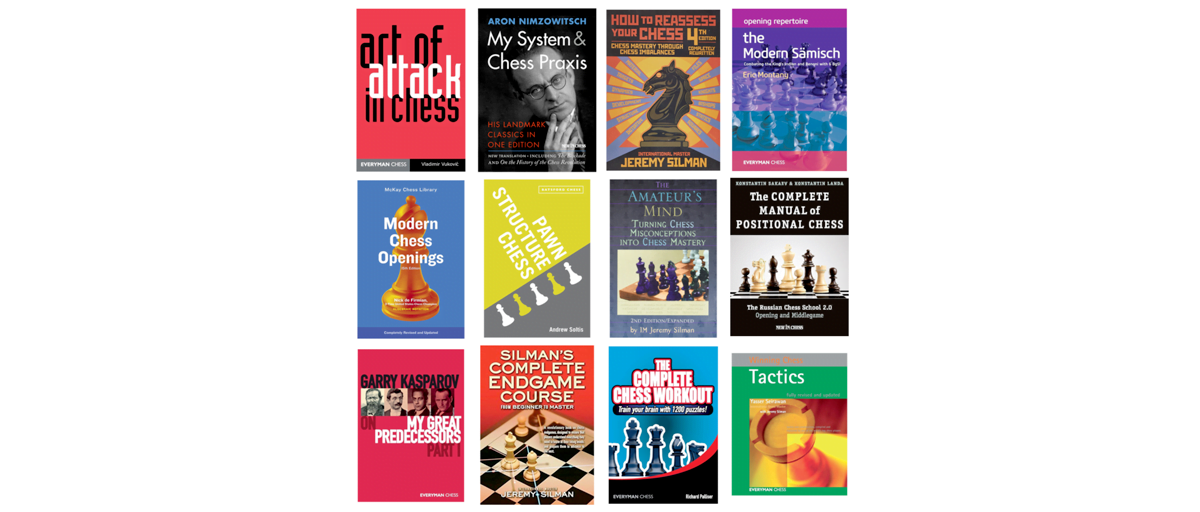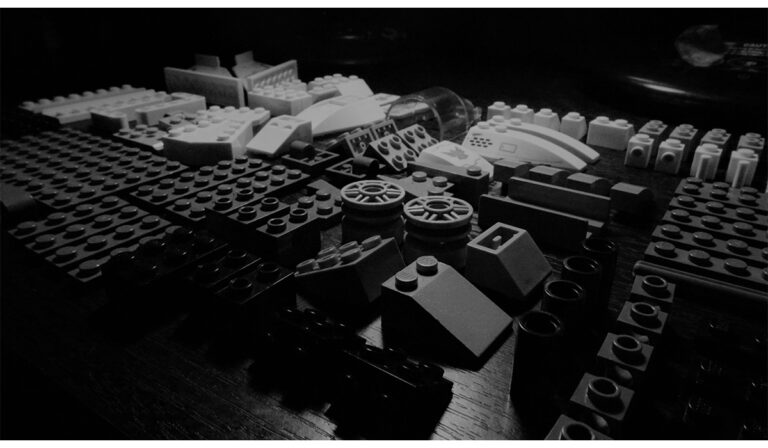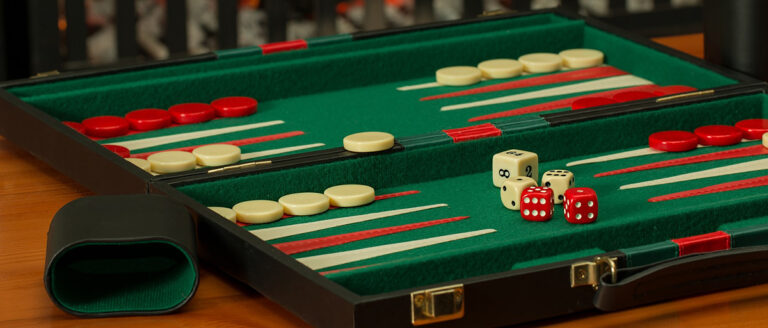These chess books stand as beacons of knowledge, crafted by legendary players, grandmasters, and revered authors who have left their mark on the ever-evolving chess landscape. Whether you’re an aspiring player looking to fortify your foundation or a seasoned competitor seeking to refine your skills, this compilation promises to be your trusted companion on your chess journey.
Each book on this list offers a unique perspective, unraveling the secrets of the game, and offering strategies honed through years of experience. From the classic teachings of yesteryears to the contemporary insights of modern masters, these books cover the spectrum of chess education.
Whether you’re seeking to sharpen your opening repertoire, enhance your middlegame prowess, or deepen your understanding of endgame strategies, you’ll find the guidance you need within these pages. As you immerse yourself in the pages of these books, you’ll witness the evolution of the game, the unfolding of intricate combinations, and the unraveling of timeless tactics.
We have selected the 18 best chess books available on Amazon today. Let them be your companions, mentors, and sources of inspiration as you traverse the intellectual landscape of one of humanity’s greatest pastimes.

Table of Contents
1. “My System & Chess Praxis” by Aron Nimzowitsch;

4.5 rating on Goodreads.com
Nimzowitsch will first and foremost be remembered as the founder of the Hypermodern movement and the author of the undisputed classics My System and Chess Praxis. In his first book, he expounded his theories of prophylaxis, blockades and much more, while providing ground-breaking insights in pawn-structures. In the sequel Nimzowitsch demonstrated how he had successfully tested his theories in his games.
As a chess player, Aron Nimzowitsch (1886-1935) belonged to the very best. In his peak years the Latvian-born maestro was ranked third in the world behind Capablanca and Alekhine. His greatest successes were first place in Dresden in 1926 (8½/9, one and a half points ahead of Alekhine) and Carlsbad 1929 (15/21, ahead of Capablanca, Spielmann and Rubinstein).
Nimzowitsch’s masterpieces are unique landmarks in the history of chess. Without reading Nimzowitsch your chess education cannot be complete. Perhaps not all of his convictions have stood the test of time, but even today, any chess student will deepen his understanding and broaden his play while enjoying the author’s insights and witticisms.
Part of the charm of Nimzowitsch’s prose was his idiosyncratic use of the German language, which has carefully been preserved in Robert Sherwood’s new translation.
Bonus: Added are the influential essays The Blockade and On the History of the Chess Revolution 1911-1914. This edition gives the reader access to Nimzowitsch’s four major works!
2. “The Complete Manual of Positional Chess” by Sakaev & Landa –
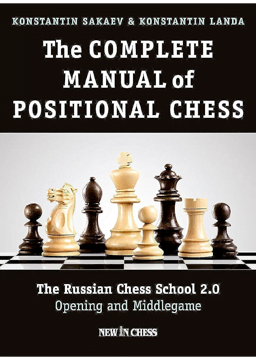
4 rating on Goodreads.com
Russia boasts a long and rich tradition in chess education. The government recognizes the importance of chess and the existing programmes are constantly refined and updated. Russian chess teachers and trainers are simply the best in the world.
The Complete Manual of Positional Chess is the latest and most comprehensive product of this Russia striving for perfection. This handbook, probably the most thorough grounding in the history of teaching chess, was recently created for chess teachers at the DYSS, the special sports school for young talents in Russia.
Konstantin Sakaev and Konstantin Landa present a complete set of instructions and tips for trainers and self-improvers. It teaches you not only how to enhance your fundamental knowledge and technical skills, but also how to work on your physical and psychological conditioning. You are handed basic and advanced tools to improve in a wide array of areas: quick development and fighting for the centre in the opening, calculating cleanly and taking decisions in the middlegame, tackling your fear of disturbing the material balance, and how to restrict the role the chess computer plays in your life.
If you complete Sakaev and Landa’s course you will be able to assess virtually any position you are confronted with. With its all-encompassing approach this ground-breaking book allows everyone to reap the fruits of the long tradition of instructive excellence in Russia.
Offers comprehensive insight into positional concepts.
Konstantin Sakaev is a Grandmaster and a former Russian Champion. He won Olympiad gold in 1998 and 2000 with the Russian team and he has assisted World Champion Vladimir Kramnik as his second. Konstantin Landa is a Russian Grandmaster and a FIDE Senior Trainer.
3. “Bobby Fischer Teaches Chess” by Bobby Fischer –
A one-of-a-kind masterclass in chess from the greatest player of all time.
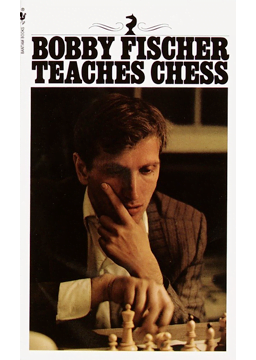
4 rating on Goodreads.com
Learn how to play chess the Bobby Fischer way with the fastest, most efficient, most enjoyable method ever devised. Whether you’re just learning the game or looking for more complex strategies, these practice problems and exercises will help you master the art of the checkmate.
This book teaches through a programmed learning method: It asks you a question. If you give the right answer, it goes on to the next question. If you give the wrong answer, it explains why the answer is wrong and asks you to go back and try again. Thanks to the book’s unique formatting, you will work through the exercises on the right-hand side, with the correct answer hidden on the next page. The left-hand pages are intentionally printed upside-down; after reaching the last page, simply turn the book upside-down and work your way back.
When you finish, not only will you be a much better chess player, you may even be able to beat Bobby Fischer at his own game!
Bobby Fischer was an American chess grandmaster, the eleventh World Chess Champion.
4. “Silman’s Complete Endgame Course” by Jeremy Silman –

4.37 rating on Goodreads.com
For more than 100 years, the world’s leading chess players and teachers have told their students to study the endgame.
Silman’s Complete Endgame Course, by famed writer and player Jeremy Silman, is the one and only endgame book you’ll need as you move up the ladder from beginner to strong tournament player and finally to master. Silman’s book teaches the student everything he or she needs to know at his or her current rating level, and builds on that knowledge for each subsequent phase of the player’s development.
Starting at the beginner’s level, all basic mates are clearly and painstakingly explained. After that, the critical building blocks that form the endgame foundation for all tournament hopefuls and experienced tournament competitors are explored in detail. Finally, advanced endgame secrets based on concepts rather than memorization are presented in a way that makes them easy to master.
The basic keys to a well-rounded endgame education—Opposition, the Lucena and Philidor Positions, Cat and Mouse, Trebuchet, Fox in the Chicken Coup, Triangulation, Building a Box, Square of a Pawn, Outflanking, the Principle of Two Weaknesses—are vital. But equally important is creating a love of the endgame, which is addressed at the end of the book with a look at chess tactics, minor piece domination, and a discussion of the five greatest endgame players of all time—all things that every fan of chess at every level can enjoy.
Jeremy Silman is an International Master and a world-class teacher, writer, and player who has won the American Open, the National Open, and the U.S. Open. Considered by many to be the game’s preeminent instructive writer, he is the author of over thirty-six popular books, including How to Reassess Your Chess (universally accepted as a modern classic), The Amateur’s Mind, The Complete Book of Chess Strategy, and The Reassess Your Chess Workbook.
5. “Winning Chess Tactics” by Yasser Seirawan –
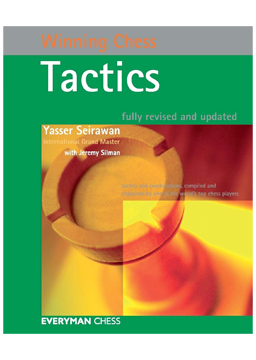
4.17 rating on Goodreads.com
Yasser Seirawan is one of the top-ranked chess players in the U.S. and was the first American candidate for the World Championship title since Bobby Fischer. He is a four-time U.S Champion, the 1989 Western Hemisphere Champion, and a ten-time member of the U.S. chess Olympiad team. His achievements distinguish him as one of only a handful of players to have defeated world champions Garry Kasparov and Anatoly Karpov in tournament play.
Attack? Defend? Swap pieces? Tactics are the watchdogs of strategy that take advantage of short-term opportunities to trap or ambush opponents and quite possibly change the course of a game in a single move. Why should players only hope that opponents will blunder when International Grandmaster Yasser Seirawan can show them how to put the tactics of the world’s chess legends to work. Choose from the double attack, the pin, the skewer, deflection, the décor, x-rays, windmills, and many more time-tested tactics.
Using classic board situations arranged in chapters by tactical themes, Seirawan teaches readers how to:
- Plan the entire game from the very first move
- Think ahead, step-by-step, anticipating every obstacle opponents can throw their way
- Position themselves for the smashing combination and endgame they have always dreamed of
Board positions from actual games played by history’s great chess tacticians are provided throughout. Review tests for each topic let them track their improvement. In no time they will be playing better, with more confidence than they ever thought possible.
6. “Logical Chess: Move by Move” by Irving Chernev –

4.29 rating on Goodreads.com
Having learnt the basic moves, how exactly should a player improve?
In this much loved classic, Irving Chernev explains 33 complete games in detail, telling the reader the reason for every single move. Playing through these games and explanations gives a real insight into the power of the pieces and how to post them most effectively.
Irving Chernev (1900–1981) was a Russian–American chess author who wrote over 20 books, including the bestselling Invitation to Chess and Logical Chess: Move By Move.
7. “Opening Repertoire: The Modern Samisch” by Eric Montany –
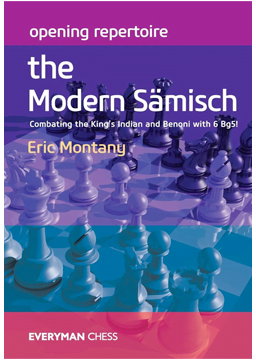
4 rating on Goodreads.com
Learn to play the Modern Sämisch with confidence with an emphasis on plans and strategies.
The Sämisch variation is a powerful method to counter the popular King’s Indian Defence. The key move is the advance f2-f3, consolidating White’s central space advantage and limiting Black’s options for counterplay. In the traditional Sämisch White develops the queen’s bishop on e3 but in the modern version, as explored in this book, the move Bg5 is preferred. This creates further problems for Black as the natural King’s Indian counter … e7-e5 allows White a potentially strong pin against the f6-knight, while chasing the bishop with … h6 and … g5 creates kingside weaknesses.
Eric Montany is a USCF National Master and has twice been the state champion of Colorado. He has worked with a number of highly successful junior players.
8. “The Complete Idiot’s Guide to Chess” by Patrick Wolff –
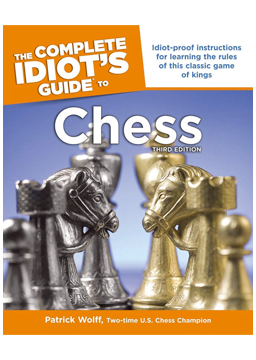
3.96 rating on Goodreads.com
Written by a U.S. Chess Champion, International Chess Grandmaster, and longtime instructor, this book includes information for both novice and expert, including over 400 illustrated chessboards and photos; over 20 pages of detailed answer key notes; a completely new chapter on new evidence about chess and its impact on brain power; a guide to the art of chess collectibles; and more.
Patrick Wolff is a two-time U.S. Chess Champion (1992 and 1995) and an International Chess Grand-master. Patrick writes a chess column for the Boston Globe. In addition, he has been a chess coach and instructor and has appeared in several instructional chess videos.
9. “The Art of Attack in Chess” by Vladimir Vuković –

4.25 rating on Goodreads.com
One of the finest chess books ever written, now in the revised algebraic edition. The author expounds both the basic principles and the most complex forms of attack on the king.
10. “Pawn Structure Chess” by Andrew Soltis –
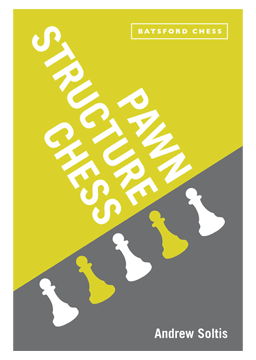
4.11 rating on Goodreads.com
Every chess player needs to know how to handle his pawns. Pawns form the ‘playing fields’ of chess games, a semi-permanent ‘structure’ that can determine whether a player wins or loses. This comprehensive guide to pawn structure teaches the reader where pieces are best placed, which pawns should be advanced further or exchanged, and why certain structures are good and others disastrous. This invaluable book is a major update of this chess-world classic, first published in 1975 and unavailable for several years.
International Grandmaster Andrew Soltis is chess correspondent for the New York Post and a very popular chess writer. He is the author of many books including What it Takes to Become a Chess Master, Studying Chess Made Easy and David Vs Goliath Chess.
11. “My Great Predecessors” series by Garry Kasparov –

4.38 rating on Goodreads.com
A multi-volume series covering the history of world chess champions.
The battle for the World Chess Championship has witnessed numerous titanic struggles which have engaged the interest not only of chess enthusiasts but also of the public at large. The chessboard is the ultimate mental battleground and the world champions themselves are supreme intellectual gladiators. This magnificent compilation of chess form the basis of the first part of Garry Kasparov’s definitive history of the World Chess Championship. Garry Kasparov, who is universally acclaimed as the greatest chessplayer ever, subjects the play of his predecessors to a rigorous analysis. Part one features the play of champions Wilhelm Steinitz (1886-1894), Emanuel Lasker (1894-1921), Jose Capablanca (1921-1927) and Alexander Alekhine (1927-1935 and 1937-1946).
Garry Kasparov grew up in Baku, Azerbaijan (USSR) and became the youngest ever world chess champion in 1985 at the age of 22. He held that title until 2000. He retired from professional chess in March 2005 to found the United Civil Front in Russia, and has dedicated himself to establishing free and fair elections in his homeland. A longtime contributing editor at The Wall Street Journal, Kasparov travels around the world to address corporations and business audiences on strategy and leadership, and he appears frequently in the international media to talk about both chess and politics. When not traveling he divides his time between Moscow and St. Petersburg.
12. “How to Reassess Your Chess” by Jeremy Silman –

4.34 rating on Goodreads.com
How to Reassess Your Chess is the popular step-by-step course that will create a marked improvement in anyone’s game. In clear, direct language, Silman shows how to dissect a position, recognize its individual parts and ultimately find the move that conforms to the needs of that particular situation. By explaining the thought processes that go into a master’s choice of move, the author presents a system of thought that makes advanced strategies seem clear, logical and at times even obvious. How the Reassess Your Chess offers invaluable knowledge and insight that cannot be found in any other book.
13. “Chess Tactics for Champions” by Susan Polgar, Paul Truong –

4.23 rating on Goodreads.com
Susan Polgar became the first female grandmaster at age 15—and it wasn’t luck that got her there. Her use of tactics, combinations, and strategy during her games gave her the critical advantage she needed against her opponents. In Chess Tactics for Champions, Polgar gives insight into the kind of thinking that chess champions rely on while playing the game, specifically the ability to recognize patterns and combinations. With coauthor Paul Truong, Susan Polgar teaches the tactics she learned from her father, Laszlo Polgar, one of the world’s best chess coaches.
Susan Polgar was a gold medalist at the 2004 Chess Olympiad. She is the current World Champion in Women’s Chess and the top ranked female chess player in the United States.
Paul Truong is an eleven-time National Champion and was the captain and business manager of the 2004 U.S. Women’s Olympiad Team.
14. “100 Endgames You Must Know” by Jesus de la Villa –
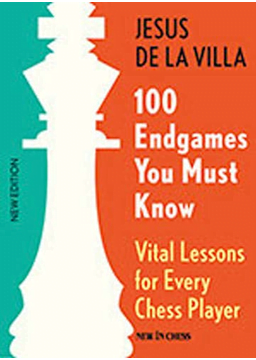
4.48 rating on Goodreads.com
This is a new and improved edition of an all-time classic! The good news about endgames is that there are relatively few endings you should know by heart and that once you know these endings, that’s it. Your knowledge never goes out of date!
The bad news is that, all the same, the endgame technique of most players is deficient. Modern time-controls make matters worse: there is simply not enough time to delve deep into the position.
Grandmaster Jesus de la Villa debunks the myth that endgame theory is complex and he teaches you to steer the game into a position you are familiar with. This book contains only those endgames that show up most frequently, are easy to learn and contain ideas that are useful in more difficult positions.
Your performance will improve dramatically because this book brings you simple rules, detailed and lively explanations, many diagrams, clear summaries of the most important themes and dozens of tests.
15. “The Complete Chess Workout” by Richard Palliser –

4 rating on Goodreads.com
In this book, tactics expert Richard Palliser presents the reader with an enormous 1500 chess puzzles, all checked for accuracy by the latest computer engines. There is something for players of all levels here: many basic tactics – forks, pins, skewers and checkmates – to appeal to beginners and improvers, and a considerable number of brain-teasers that will tax even the strongest of players.
16. “Modern Chess Openings” by Nick de Firmian –
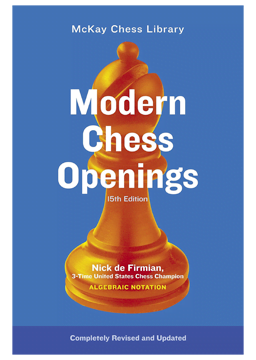
4.08 rating on Goodreads.com
Modern Chess Openings is the best and most trusted tool for serious chess players on the market. First published over a half-century ago, this is a completely revised and updated edition of the book that has been the standard English language reference on chess openings. An invaluable resource for club and tournament players, it now includes information on recent matches and the most up-to-date theory on chess openings.
Modern Chess Openings is ideal for intermediate players ready to elevate their game to the next level or International Grandmasters who want to stay on top of recent chess innovations.
Nick de Firmian is acclaimed as the world’s leading expert on chess openings. He “taught” the supercomputer Deep Blue the opening moves it used to defeat World Champion Garry Kasparov in 1997. As this book goes to press, de Firmian reigns as the current United States Chess Champion—making him a three-time winner of the top American title. He has also represented the United States in seven Chess Olympiads and three World Chess Championship cycles. His previous written works include the 13th edition of Modern Chess Openings; San Francisco 1995, which detailed that year’s Grandmaster Invitational; and various articles for Chess Life magazine. A graduate of UC Berkeley with a degree in physics, de Firmian is a native Californian who now resides in Copenhagen, Denmark, with his wife and son.
17. “Understanding Chess Middlegames” by John Nunn –
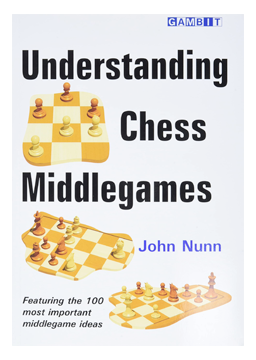
4.07 rating on Goodreads.com
The three-times World Chess Solving Champion distils the most useful middlegame concepts and knowledge into 100 lessons that everyone can understand.
Following on from his successful Understanding Chess Endgames, John Nunn turns his attention to the middlegame – the phase of the chess battle where most games are decided, yet the one that has received the least systematic treatment from chess writers. With the outstanding clarity for which he is famous, Nunn breaks down complex problems into bite-sized pieces.
In the case of attacking play, we are shown how to decide where to attack, and the specific methods that can be used to pursue the enemy king. Positional play is described in terms of the major structural issues, and how the pieces work around and with the pawns. Nunn explains how to assess when certain pieces are better than others, and how we can make use of this understanding at the board. Readers will never be short of a plan, whatever type of position arises.
Each lesson features two inspiring examples from modern chess, annotated honestly and with a keen focus on the main instructive points. Both sides’ ideas are emphasized, so we get a clear picture of the ways to disrupt typical plans as well as how to form them.
Dr John Nunn is one of the best-respected figures in world chess. He was among the world’s leading grandmasters for nearly twenty years, winning four gold medals in chess Olympiads and finishing sixth overall in the World Cup in 1989. He is a much-acclaimed writer, whose works have won ‘ Book of the Year’ awards in several countries. In 2004, 2007 and 2010, Nunn was crowned World Chess Solving Champion, ahead of many former champions.
18. “The Amateur’s Mind” by Jeremy Silman –

4.19 rating on Goodreads.com
This book takes the student on a journey through his own mind and returns him to the chess board with a wealth of new-found knowledge and the promise of a significant gain in strength. Most amateurs possess erroneous thinking processes that remain with them throughout their chess lives. These flaws in their mental armour result in stinging defeats and painful reversals. Books can be bought and studied, lessons can be taken — but in the end, these elusive problems always prove to be extremely difficult to eradicate. Seeking a solution to this dilemma, the author wrote down the thoughts of his students while they played actual games, analysed them, and catalogued the most common misconceptions that arose. This second edition greatly expands on the information contained in the popular first edition.
These chess books cover a wide range of topics and skill levels, from beginner to advanced. Depending on your level and interests, you can choose books that align with your chess goals and areas of improvement.
Affiliate Disclosure
Some of the links on Chesspert.com are affiliate links. This means that we may earn a small commission if you click through and make a purchase, at no additional cost to you. Please note that our product reviews and roundups are independent, and the affiliate relationships do not influence our content in any way.
Chesspert.com is a participant in the Amazon Services LLC Associates Program, an affiliate advertising program designed to provide a means for sites to earn advertising fees by advertising and linking to Amazon.com.
Chesspert.com is also a participant in the GammonVillage Inc. Affiliate Program, an affiliate advertising program designed to provide a means for sites to earn advertising fees by advertising and linking to GammonVillage.com.
Amazon and the Amazon logo are trademarks of Amazon.com, Inc. or its affiliates. GammonVillage is a trademark of GammonVillage Inc. or its affiliates.
Our passion for board games extends far beyond the chess table. We’ll be your trusted companion, on a journey through the enchanting realms of not only chess but also backgammon, dominoes, mahjong, checkers, and a diverse array of other captivating board games.
Whether you’re in search of the ideal chess set, luxury backgammon sets, a chinese checkers set, a checkers set, or if you’re seeking the excitement of a thrilling game of mahjong solitaire, we’ll guide you along the way.
In partnership with our affiliates, we bring you an extensive selection of board games and past times to explore and enjoy.
Dive into our extensive collection of guides and reviews, and unlock the joy and exhilaration that board games offer. From exquisitely crafted game pieces to the essential accessories that elevate your gaming experience, we’re here to guide you through it all with ease and delight.
Join us in celebrating the timeless allure and camaraderie that these games nurture, one post at a time!
